LGBT Pride Month 2021 - Dudley Knox Library
LGBT Pride Month
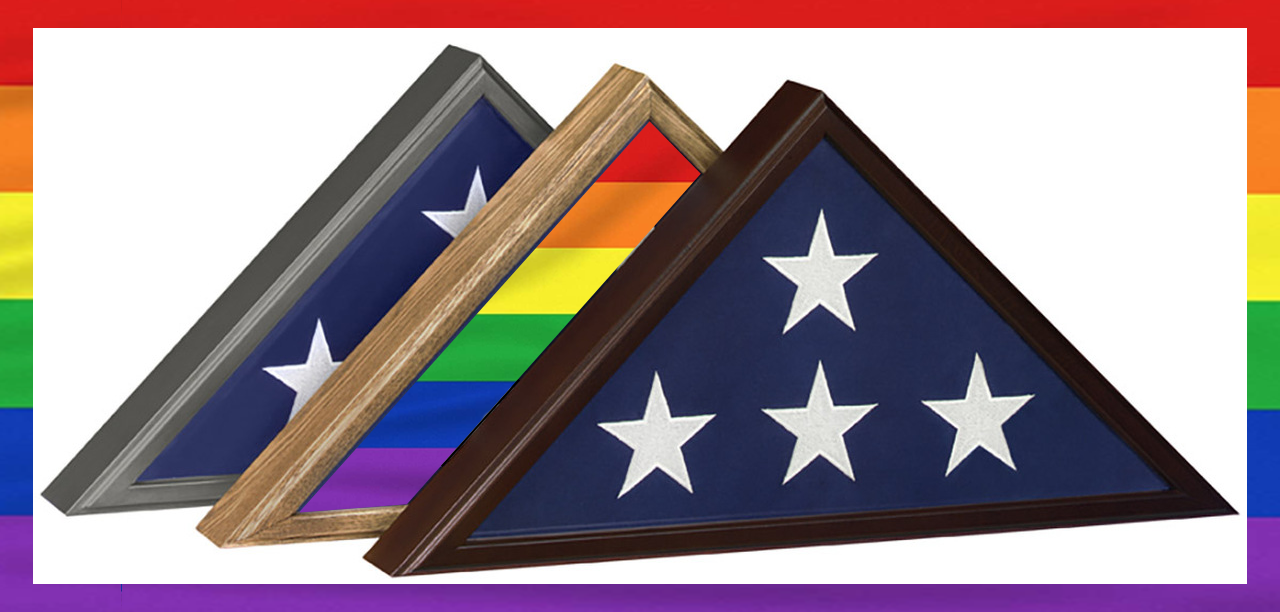
Interview with Professor Emeritus Mark Eitelberg, Graduate School of Defense Management
LGBT Pride and the Military: For All Who Aspire to Serve
What are NPS' main contributions to understanding the impacts around this issue?
How has NPS influenced policy on this issue?
In the military context, what misperceptions about LGBT people persist?
Why is this a human rights issue?
What research remains to be done, and why is continuing research important?
Biography
NPS has been involved in research on LGBT persons and the military for over 20 years. What are our main contributions to understanding the impacts around this issue?
NPS has been involved (directly or indirectly) in research, teaching, and publishing on the subject for at least 30 years. Before addressing our contributions, I should provide a brief history of our work here at NPS and the role we have played in educating the nation’s defense policymakers. “Begin at the beginning,” Lewis Carroll famously wrote in Alice in Wonderland, “and go on till you come to the end: then stop.”
NPS hired me in 1982 as an Adjunct Associate Research Professor. Some months earlier, I had enjoyed my fifteen minutes of national fame as coauthor (with Martin Binkin) of a Brookings Institution book, Blacks and the Military. I arrived here with research support from the Office of the Secretary of Defense (OSD) and became the first faculty member assigned to the newly created Manpower Research Center (MARC) in the Department of Administrative Sciences. Around 1986, MARC morphed into the Defense Personnel Security Research and Education Center (PERSEREC), a tenant activity of NPS with Professor Dick Elster as its first Director (subsequently NPS Provost). PERSEREC provided me with a small office where I could concentrate on my research and writing when not teaching or meeting with faculty, students, and others at NPS.
While at PERSEREC, I had the great pleasure of becoming a colleague and friend of Dr. Ted Sarbin, a “scholar of rare intellect,” a prominent American psychologist, and an emeritus professor of sociology and criminology (UC-Santa Cruz and UC-Berkeley).
In the late 1980s, while working at PERSEREC, Sarbin was asked to study if gays and lesbians serving in the military should be considered a security risk. The resulting report, “Nonconforming Sexual Orientations and Military Suitability,” coauthored with Dr. Kenneth Karols, a Navy psychiatrist and flight surgeon, concluded that gays and lesbians in the military would be no more of a security risk than their heterosexual peers. The research sponsors in DoD were aghast and suppressed the “unauthorized,” “flawed and useless” report, which also recommended critical review of the military’s longstanding ban of gays and lesbians. Somehow, months later, a copy of the report found its way to selected members of Congress intent on ultimately removing the ban on gays—and they leaked it to the national news media. The news media reveled in the story of how DoD officials attempted to bury the report almost as much as the report’s findings and provocative recommendations. The mere spark of a controversy here in sleepy, old Monterey soon became an uncontrollable wildfire after being featured on Ted Koppel’s Nightline, a popular late-night TV news show. Thus began a decades-long movement to remove the military’s exclusionary policies on gays and lesbians.
When Ted Sarbin passed away in 2005, The New York Times published an obituary/article highlighting his PERSEREC report and conclusions: “Theodore Sarbin, Scholar, Dies at 94; Studied Role of Gay Troops.” Here was a world-famous psychologist with many awards and outstanding accomplishments—and his obituary highlights a single government report that he coauthored while working in semi-retirement for a tiny, specialized government agency about as far-removed from Washington, DC as one can get. The report by Sarbin and Karols preceded enactment of the policy known as “Don’t Ask, Don’t Tell” (DADT) by six years. By the time of Sarbin’s passing, the so-called “compromise policy” had become a focus of widespread debate, as it continued to ban the participation of openly gay or lesbian service members in the US military. (Often overlooked is another 1988 report by Dr. Michael McDaniel of PERSEREC, Pre-Service Adjustment of Homosexual and Heterosexual Military Accessions: Implications for Security Clearance Suitability.)
The PERSEREC report might not have received as much attention by the press and public if DoD had merely acknowledged its existence and allowed it to be published. Officials in DoD apparently failed to learn this lesson when, in 1991, OSD enforced its continuing code of silence on the subject by prohibiting defense-affiliated scientists from participating in a featured panel discussion of “Gays and the Military” at the annual convention of the American Psychological Association (APA). OSD’s actions in quietly ordering its scientists and others to withdraw from the panel became a national news story—while the panel’s content itself received scant coverage. Ted Sarbin and I were among the original invitees for the panel. (My role was to compare the treatment of gays with that of other groups excluded from the military. An APA conference paper I presented in 2003 further discusses the incident. (See “Spacemen, Scholars, and Sailors: Another Look at the Military’s Treatment of Gays.”)
The most important, collective contribution by members of the NPS academic community is undoubtedly a study that began in 1993 and concluded in 2013. (This decades-long study is the focus of a presentation originally requested by NPS to showcase its policy research for Navy sponsors: “Gays and the Military: A 20-Year Study at the Naval Postgraduate School.”) As noted in the presentation, aside from Operation Desert Storm, “gays and the military” was the most-covered defense topic in the national news media during the entire decade of the 1990s. Recall, the 1990s also witnessed significant debate over the role of women in combat—as well as a relatively massive defense downsizing and reorganization along with Base Realignment and Closure (BRAC) initiatives throughout the country.
1n December 1993, DoD issued a directive revising its policy on gays in the military. The new policy would take effect at the end of February 1994. Around the time DoD drafted its directive, I was approached by two students, Fred Cleveland, a former Blue Angel, and Mark Ohl, a Navy Supply Corps officer. Cleveland and Ohl wanted me to serve as advisor on a study of DoD’s new DADT policy. I agreed and asked Ted Sarbin to be Associate Advisor. The students and their advisors created a survey distributed to all US Navy students at NPS on 14 February 1994, exactly two weeks before DADT was scheduled to formally begin. Additionally, focused interviews were conducted with a sample of Navy students who responded to the survey. Among other findings, the results indicated that Navy students were generally unfamiliar with the provisions of the new policy. Further, a majority of students felt uncomfortable with the perceived changes in policy and displayed a “level of anxiety” apparently influenced by their misunderstanding of the policy changes.
Frankly, I never expected to be involved in another survey or NPS thesis concerning DADT. I figured from the start that DADT was so flawed and unfair to gays and lesbians that it could never pass the test of time, with “time” being about 2 or 3 years at most. Certainly, no more than 5 years. So much for flaws and fairness.
As it turned out, NPS thesis students conducted another survey in 1997 (Friery), then again in 2000 (Bicknell), and again in 2004-2009 (Garcia), and again in 2011 (Ferguson). In 2013, we iced the cake by conducting two more surveys, one focused on Navy officers (Appleman & McLaughlin) and another focused on Marines (Callahan & Paffenroth). The 2013 surveys are particularly noteworthy because they were administered over one year after DADT’s repeal, thus giving respondents an opportunity to serve alongside openly gay officers and enlisted personnel in the Navy or Marine Corps.
These seven studies used an almost-identical methodology for gathering data through written surveys and focus groups. In fact, researchers in the latter six studies took great care in duplicating the precise wording, sequence, and format utilized by Cleveland and Ohl in the 1994 effort. Occasionally, researchers made minor changes at the end of a survey to capture attitudes on a particular issue of interest, but all surveys included a central core of questions that originated in 1994. In this way, researchers could better estimate changes in the views and personal experiences of respondents over time.
Generally, trend analyses of the studies conducted during DADT showed increasing acceptance of gays in the military, and much more so in the final years of DADT. The relatively strong and consistent trend toward acceptance was attributed to the so-termed “contact hypothesis,” catching up with society (where acceptance was stronger on average during earlier years), generational effects of increased acceptance over two decades, and other factors (e.g., dealing with inevitable change). Researchers found no significant problems or issues at the point leading to DADT’s repeal.
The two studies conducted over one year after repeal of DADT—“one year out”—showed the same movement toward increasing acceptance, with a solid majority of Navy officers strongly supporting personnel who were open about their sexual orientation. The same trend held for Marine Corps officers, although levels of acceptance in the Marine Corps lagged behind those in the Navy and tended to differ by occupational specialty and length of service. Overall, as the researchers wrote, “study results exhibited strong agreement that the current policy protects the rights of all Marines, regardless of sexual orientation.”
These NPS surveys are particularly important because they filled an information gap that covered the entire period from DADT’s creation to its final year. DoD refused to approve any surveys of military personnel during DADT. Defense leaders believed that the policy was too divisive politically and feared the negative consequences of such surveys for “morale, good order, and discipline” far outweighed any potential benefits. NPS was able to bypass DoD’s embargo by conducting surveys exclusively with students and adhering closely to Institutional Review Board (IRB) requirements (including final approval by the NPS President). The need to maintain freedom of expression at the university was omnipresent in the minds of all, but never arose in discussions.
It is interesting and instructive to observe that a 2001 book, Managing Diversity in the Military: Research Perspectives from the Defense Equal Opportunity Management Institute, contains only one chapter (out of 24) that addresses existing research on gays in the military. This is a chapter by me entitled “Women and Minorities in the Military: Charting a Course for Research.” In a chapter on “Cultural Diversity and Gender Issues,” the Director of DEOMI’s Directorate of Research writes: “Very little research has been conducted on this [gays in the military] issue. Since law and policy preclude homosexual behavior in the military, service laboratories are reluctant to sponsor research on the subject. . . . The highly political and controversial nature of this issue will, no doubt, influence the course of research on the topic” (p. 321).
Several other studies (Barnes, 2004; McIntyre, 1980; Washington, 2012; Peterson, 1997; Rea, 1997) by NPS students have looked at issues concerning gays and lesbians in the military. Of particular note is the 1997 study by Rea, “Unit Cohesion and the Military’s ‘Don’t Ask, Don’t Tell’ Policy.” Employing seven focus-group interviews of NPS students, Rea found a relatively strong sentiment that gays and lesbians could disrupt unit cohesion—but participants could not agree on the root causes of such disruption. These sentiments were highly speculative since virtually no experiential data existed on openly gay persons otherwise excluded from serving. Some officers in the study felt that DADT was actually detrimental to unit cohesion by supporting existing stereotypes that most gays and lesbians are sexually predatory and most heterosexuals are intolerant and prejudiced against gays. Additionally, according to Rea, DADT essentially instructed military personnel—through its primary arguments for existing—that homosexuals and heterosexuals could not work together effectively in a military setting. Rea drew three major conclusions from the interviews: (1) existing evidence did not support the view that gays and lesbians would weaken unit cohesion; (2) a homosexual’s identity is often defined solely by his or her sexual orientation—and heterosexuals believe that this identity (including basic values, standards of behavior, goals, and experiences) is vastly different from their own; and (3) feelings of discomfort and a lack of privacy (on naval vessels) is a stronger argument than cohesion for prohibiting openly gay and lesbian personnel.
Outside of NPS, in 2006, I served on a University of California Blue Ribbon Commission that published a final report, “Financial Analysis of ‘Don’t Ask, Don’t Tell’: How Much Does the Gay Ban Cost?” Another NPS professor, Dr. Frank Barrett, and a PERSEREC Senior Psychologist, Dr. Ralph Carney, also served on the Commission. (Dr. Carney is co-editor of the 1997 book, Out in Force: Sexual Orientation and the Military.) I also reviewed two books, (Gays and Lesbians in the Military: Issues, Concerns, Contrasts, 1994; Don’t Ask, Don’t Tell: Debating the Gay Ban in the Military, 2003) on gays and the military for the scholarly journal, Armed Forces & Society. By reviewing the books, I felt that I could continue to raise awareness and understanding of the issue in the community of scholars and active researchers. Further, I often incorporated discussions of DADT and Defense Manpower Data Center (DMDC) statistics in my class lectures, student projects, and with various guest lecturers. For example, during my 12 years as a DoD representative on The Technical Cooperation Program (TTCP), my presentation on “Gays in the US Military” became an annual tradition. Oddly, over the period from 1990-2001, I watched the policies of other member-nations become more inclusive than those in the U.S.
Over most of the years leading up to DADT and for a few years after its repeal, I also incorporated related material in sections of two courses (one on “policy analysis,” and another providing an introduction to Military Psychology and Military Sociology). Often, these sections would include various writing assignments. In my course on policy analysis, I found a way for our students to demonstrate their analytical skills by contributing to DoD’s “Comprehensive Review of Issues Associated with a Repeal Don’t Ask, Don’t Tell.” This study examined the various implications of repealing DADT and included one of the most exhaustive surveys of DoD personnel ever administered.
As noted above—way, way above—the full story of NPS contributions is not over until we “reach the end.” A more recent issue, moving from LGB to T, concerns whether transgender persons should be allowed to serve in the US military. In March 2014, Endia Mendez helped to pave the way for the 2016 policy that removed exclusions for transgender persons with her thesis, “Transgenders in the U.S. Military: Policies, Problems, and Prospects.” The 2016 policy change was short-lived, as the new, incoming presidential administration supported a strict return to banning transgender persons from serving openly in the military. Around this time, another NPS student developed educational materials on the topic that could be used in classes at NPS and elsewhere: “Teaching Case: Transgender Sailors, Leadership Challenges, and Ethical Dilemmas” (Borja, 2018). Meanwhile, NPS faculty and former faculty—for example, Professors Barrett, Eitelberg, Lucas, and Vantresca—contributed to several publications by the Palm Center. “Discharging Transgender Troops Would Cost $960 Million” (August 2017); “Understanding Trump’s Memo on Transgender Service Members: What it Means, and Why it is Contrary to Fact and Law (August 2017); “DoD is Ready to Accept Transgender Applicants” (December 2017); “Pentagon Officials Misled Congress on Transgender Troops by Asserting Falsehoods that DoD’s Own Data Contradict, and by Calling Equal Treatment ‘Special’ Treatment” (March 2019).
In 2017, I was asked to submit a “Declaration In Support of Plaintiff’s Motion for Preliminary Injunction” of the presidential administration’s reinstated ban on transgender persons in the military. As it turned out, I submitted an expert declaration supporting four cases filed in separate U.S. District Courts. These declarations are presented on NPS Calhoun (Doe, Stone, Karnoski, Stockman) along with a brief background of the several cases, initially successful in blocking the ban. The US Department of Justice, anticipating action by the Supreme Court, deposed several of the plaintiff’s expert witnesses. I was among these witnesses, deposed by DoJ at a Monterey Hotel for approximately 8 hours on a cool November day one week before Thanksgiving, 2019.
But the story doesn’t end quite yet. I’ll address a few other details in answering the questions below.
How has NPS influenced policy on this issue?
It’s difficult (at best) to determine how research at NPS, or at any other university, may have influenced policy. I can say that several of the student projects listed above were included in the Manpower Systems Analysis (MSA) Curriculum’s “Thesis Day.” This is an annual event where the very best thesis projects in the curriculum are showcased in Washington, D.C. The annual event was created by Admiral Mike Boorda in the late 1980s when he was Chief of Naval Personnel. Typically, these events attracted military and civilian senior leaders, researchers, and other scientists from the Navy and Marine Corps, including the Chief of Naval Personnel. Students presented their own work. When I served as the MSA Academic Associate, roughly 70 or 80 people would attend the presentations at the Navy Annex (demolished in 2013).
The research on DADT was of interest (discreetly) to many high-ranking persons in the Pentagon. Obviously, these officials publicly supported the government’s position; their private views were another matter. Also, as noted previously, students and faculty at NPS assisted a Working Group of DoD’s Comprehensive Review of Issues Associated with a Repeal of Don’t Ask, Don’t Tell when DADT’s repeal was close to assured. The Working Group was chaired by Admiral Mark Ferguson when he was Chief of Naval Personnel. Admiral Ferguson was also briefed at NPS.
Another measure of the impact for faculty and student research would be the number of times it is cited by other scholars, references to the work in government or media publications, and so on—although these do not necessarily correlate to the work’s influence on policy making. In my course on research methods, I would conclude the final class by reminding students that publication of their Master’s thesis makes them bona fide members of the Community of Scholars. (For dramatic impact in smaller classes, I would touch each student’s shoulder with a Harry Potter wand, as if bestowing knighthood.) As true members of the community, they have a shared responsibility to meet the highest professional standards. Research is a cumulative process—other researchers will use the students’ contributions to inform their own work. In turn, those who follow other researchers will likewise be informed, directly or indirectly, by the students’ contributions. The process continues, as their work influences the research of hundreds or perhaps thousands of others in the community of scholars as the years progress. Consequently, what we study or write can have an enormous impact on whomever or whatever follows. I’d often use the “ripple effect” cliché to make my point.
I’d like to think that our work at NPS is the pebble thrown in still water and that the ripples have helped to create positive change.
In the military context, what misperceptions about LGBT people persist?
Americans tend to express great trust in their military. Gallup conducts an annual poll of Americans regarding their level of confidence in American institutions. According to Gallup, the US military has been the top-ranked institution (or tied for the top) every year from 1986 to 2020. How does this relate to the question? If the American people express high levels of trust in their military, and the military excludes a certain subpopulation based on what its leaders claim are valid reasons, what would be the normal reaction among many American people? They might defer to the military’s judgment, as the US courts often do. Conversely, they might question the military’s policy or its justification—but, even in this case, due to their abiding confidence in the institution, they are left thinking that members of the excluded group must be somehow different or defective. And what about the military’s members? How are they supposed to feel when the institution tells them that, say, blacks and women can’t fight? Or that Japanese-Americans can’t be trusted? Or that gays and lesbians are harmful to morale, good order, and discipline? Or that transgender persons threaten unit cohesion?
Recall from Rea’s (1997) focus-group interviews, without the experience of serving with members of an excluded group, military personnel might be swayed to believe what they are told to believe by senior leaders. In the 1949 Broadway musical, “South Pacific,” US Marine Lieutenant Joseph Cable sings “You’ve Got to Be Carefully Taught,” with the memorable words: “You've got to be taught to be afraid/Of people whose eyes are oddly made/And people whose skin is a diff'rent shade/You've got to be carefully taught.”
I’ve been studying women and minorities in the military and the standards used to select, assign, and promote enlisted personnel and officers for most of my adult life. (See, for example, Blacks and the Military, 1982; Screening for Service, 1984; Manpower for Military Occupations, 1988; Becoming Brass, 1989; Career Progression of Minority and Women Officers, 1997; Assessing Fitness for Military Enlistment, 2006; Profiles of American Youth: Generational Changes in Cognitive Skills, 2009.) It never ceases to amaze me how the very same reasons are used interchangeably to exclude women and minorities—from one era to the next and for different groups of persons based on skin color, national origin, gender, sexual orientation, and gender identity.
Thus, persons in these groups are not excluded because they would fail individually to meet the military’s eligibility standards, but because their particular group would be detrimental to the following: morale, good order, and discipline; unit cohesion; military effectiveness; military readiness; military mobilization; military costs; and so on. In 2017 and 2018, a new concept entered the mix to justify banning transgender persons: lethality. What is lethality? Honestly, when I first heard the term I assumed it was the latest jargon for combat effectiveness or readiness with the added component of causing death or serious harm.
A February 2019 article in the NCO Journal attempts to create a rubric for the US Army’s concept of lethality based largely on individual fitness. On an individual level, the rubric includes physical fitness, combat physical fitness, marksmanship, combat-type marksmanship, and occupational skill-level scores. Unit lethality is less specific, based mainly on unit effectiveness in combat. So, how is it determined that transgender persons are generally—not individually—unqualified to meet the highest standards of individual lethality? Moreover, what evidence did the designers of the reinstated ban possess concerning the entire group’s detrimental effect on lethality? Apparently, they must have relied on the same evidence they had concerning the entire group’s negative effect on other ambiguous, abstract, amorphous, and ill-defined concepts.
I would argue that employing these mythical concepts creates a level of mystery about their meaning. That is, normal people are encouraged to accept that certain military leaders, politicians, and civilian defense officials must know what’s best for the nation’s security because they use these terms and concepts so often and so boldly. Additionally, by relying on such terms and concepts, political and military leaders can claim to have greater knowledge—allowing friendly federal courts to defer to the military’s presumed understanding and judgment through a narrow ruling that avoids larger constitutional questions. This practice is called judicial deference to defense (See Diane Mazur’s A More Perfect Military, 2010). Given recent decisions by U.S. District Courts in cases challenging the ban on transgender persons, perhaps military and civilian leaders may be more inclined to use facts rather than unsupported assertions. Probably not. At least, we can continue to hope that factual evidence will guide current and future policies regarding who will be allowed to serve in our nation’s military. (The Palm Center has been most active in developing fact-based resources “for university-affiliated as well as independent scholars, students, journalists, opinion leaders, and members of the public.” Their findings suggest the exact opposite result in banning transgender personnel—that is, reductions in military effectiveness and readiness, possible difficulties in recruiting, significantly higher costs initially, along with decreased unit cohesion and public trust in the military.)
Out in Force: Sexual Orientation and the Military (1996) includes an excellent chapter by Ted Sarbin entitled “The Deconstruction of Stereotypes: Homosexuals and Military Policy” (pp. 177-196). Here, Sarbin identifies four discrete constructions of homosexuality in American history. These are homosexuality as sin, as crime, as sickness, and, more recently, as the defining feature of a minority group. Interestingly, much of American society and its laws currently view LGBT as a minority group. This is not the dominant social construction across all of society, which is clear from the justifications used for reinstating the ban on transgender persons as well as the provisions in the ban itself. Elements of sin and crime endure, and sickness would appear to be a driving force behind assertions that transgender persons would ultimately raise costs and detract from military effectiveness, readiness, mobilization, morale/good order/discipline, unit cohesion, and, yes, lethality. It’s not easy removing misperceptions after they’ve become walls of intolerance.
Why is this a human rights issue?
OutRight Action International has compiled a “Directory of Organizations Relevant to the Human Rights of LGBT People”. The list is not exhaustive, although it is quite long, including organizations globally, regionally (internationally), and by country. Within the U.S., the Human Rights Campaign “envisions a world where every member of the LGBTQ family has the freedom to live their truth without fear and with equality under the law”). The key words of interest to LGBT and the military are “freedom to live their truth without fear and with equality under the law.” Added to this is the definition of human rights by the United Nations: “Human rights are rights inherent to all human beings, regardless of race, sex, nationality, ethnicity, language, religion, or any other status. Human rights include the right to life and liberty, freedom from slavery and torture, freedom of opinion and expression, the right to work and education, and many more. Everyone is entitled to these rights, without discrimination”. These two statements taken together give us “Freedom to live their truth without fear and discrimination and with equality under the law as it pertains to work and education and many more.”
The top two Articles developed in “The Universal Declaration of Human Rights,” adopted by the United Nations General Assembly in 1948, are as follows: Article 1, summarized as the right to equality in dignity and rights; and Article 2, freedom from discrimination.
If it can demonstrated that the government’s military unfairly discriminates against LGBT by limiting or completely banning their eligibility or participation, the matter should qualify as a violation of human rights based on commonly accepted principles. In the case of Jane Doe v. Trump, the U.S. District Court for the District of Columbia granted a preliminary injunction blocking the proposed ban on military service by transgender persons. Human rights per se did not necessarily influence the Court’s decision; rather, it was the equal protection and due process clauses of the Fifth Amendment to the U.S. Constitution. In the Court’s ruling, Judge Kollar-Kotelly stated the following: “The Court holds that Plainttiffs are likely to succeed on their Fifth Amendment claim. As a form of government action that classifies people based on their gender identity, and disfavors a class of historically persecuted and politically powerless individuals, the President's directives are subject to a fairly searching form of scrutiny. Plaintiffs claim that the President's directives cannot survive such scrutiny because they are not genuinely based on legitimate concerns regarding military effectiveness or budget constraints, but are instead driven by a desire to express disapproval of transgender people generally. The Court finds that a number of factors—including the sheer breadth of the exclusion ordered by the directives, the unusual circumstances surrounding the President's announcement of them, the fact that the reasons given for them do not appear to be supported by any facts, and the recent rejection of those reasons by the military itself—strongly suggest that Plaintiffs' Fifth Amendment claim is meritorious.”
What research remains to be done, and why is continuing research important?
When we witnessed—and literally cheered—the repeal of DADT, we knew that allowing lesbian, gay, and bisexual service members the freedom to be open about their sexual orientation was important to so many people, gay and straight alike, because it was a major step forward in our nation’s progress toward equal opportunity and the elimination of government-sanctioned discrimination. We also knew that merely eliminating DADT was not enough. DADT was cruel to many people and it had existed for most of two decades. At the same time, more severe exclusions and discrimination had existed well before DADT.
Nevertheless, in the most simple terms, eliminating obvious discrimination does not necessarily remove less obvious or hidden forms of institutional discrimination. Institutional changes tend to occur slowly over time. Removing LGBT exclusions should ultimately reduce stereotyping and prejudice, but these changes may be even slower to occur on a personal level. Evidence of this is apparent in the results of a fairly recent study of LGBT “outness,” published in the journal, Sexuality Research and Social Policy (McNamara, K.A., Lucas, C.L., Goldbach, J.T. et al. “You Don’t Want to Be a Candidate for Punishment”: a Qualitative Analysis of LGBT Service Member “Outness”. Sex Res Soc Policy 18, 144–159 (2021). The authors of this 2016 study found that a number of LGBT service members still “feared that the military environment, at both the institutional and interpersonal level, is not yet LGBT inclusive.” Further: “While repeal of LGBT bans provide a sense of institutional protection and improvement in quality of life among LGBT service members, barriers to disclosure remain. As the ‘first generation’ serving after repeals, this population weighs perceived risks and benefits to disclosure as they determine what it looks like to be an openly LGBT military member.”
There’s nothing unexpected here. However, the findings do reinforce our understanding of the need for continuing research in the years ahead. In sum, I’d like to quote from a review of diversity studies conducted by students and faculty at NPS in 1996 and 1997. I wrote this review over twenty years ago (Managing Diversity in the Military, Transaction Publishers, 2001, p. 509). I think it’s as meaningful today as it was then:
The studies summarized here also emphasize the importance of taking the long view, of seeking to gain historical perspective. Surely, one cannot fully appreciate the present—for its gains as well as lingering problems—until it has been properly weighed against the past. History can be the “Great Teacher,” as we separate the myth from reality, value the efforts of those who preceded us, and recognize that progress toward equal opportunity has indeed occurred within the military in our time. But it is likewise important that progress not be used as an excuse for inaction—because progress requires even more diligence, so that two steps forward, one step back does not become one step forward, two steps back. History, too, is replete with examples of apathy and neglect among leaders who believe that they have somehow triumphed over a problem and that progress, once achieved, is a force of its own. This is where research can help, as it sheds light on unsettled areas, points the way to possible solutions, and raises awareness of the need for positive change.
Biography
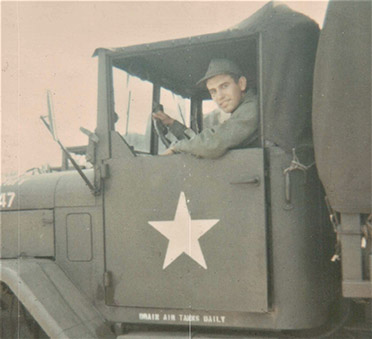 Dr. Mark J. Eitelberg is a Professor Emeritus at NPS. Prior to joining the faculty at NPS in 1982, he was a Senior Scientist with the Human Resources Research Organization (HumRRO) in Alexandria, Virginia. Between 1976 and 2017, he directed more than 34 research studies for the Office of the Secretary of Defense and U.S. Defense agencies.
Dr. Mark J. Eitelberg is a Professor Emeritus at NPS. Prior to joining the faculty at NPS in 1982, he was a Senior Scientist with the Human Resources Research Organization (HumRRO) in Alexandria, Virginia. Between 1976 and 2017, he directed more than 34 research studies for the Office of the Secretary of Defense and U.S. Defense agencies.
Mark is a graduate of Franklin and Marshall College, where he majored in Government and in Religious Studies. He holds an M.P.A. and a Ph.D. in Public Administration from New York University.
He served with the New Jersey Army National Guard (117th Cavalry, 50th Armored Division) and the U.S. Army Reserve (1st U.S. Women’s Army Corps Basic Training Battalion, 80th Division) for a combined six years, the final two as Staff Sergeant. He was a Platoon Sergeant and Truckmaster in the ARNG. He was a Senior Training Coordinator in the WAC.
Mark and his wife, Deborah, have been married for 39 years. Mark and Deborah together have over 80 years of federal service, 60 years of which for the Department of Defense. They are the proud parents of two sons and grandparents to two boys.
For a much more detailed biography, see Exhibit A in Declaration of Mark J. Eitelberg in Support of Plaintiffs' Motion for Preliminary Injunction, Doe, et al. v. Donald Trump, et al. Eitelberg, Mark J. United States District Court for the District of Columbia.
Books

Bérubé, Allan., John. D’Emilio, and Estelle B. Freedman. Coming Out Under Fire the History of Gay Men and Women in World War II. Chapel Hill, N.C: University of North Carolina Press, 1990.
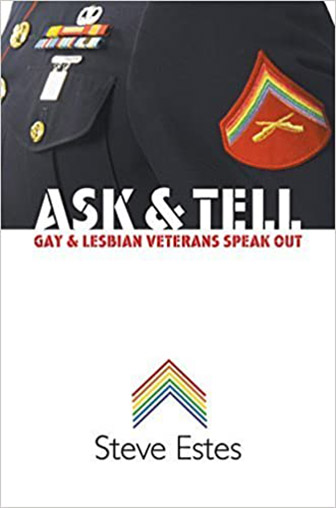
Estes, Steve. Ask and Tell: Gay and Lesbian Veterans Speak Out. Chapel Hill, NC: The University of North Carolina Press, 2007.
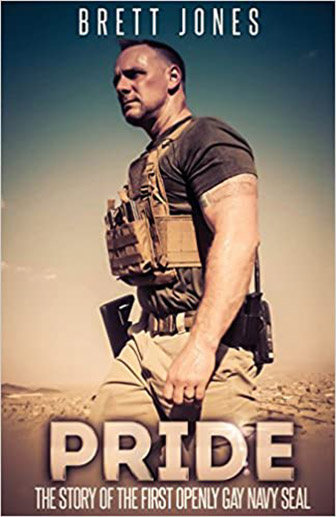
Jones, Brett. Pride: the Story of the First Openly Gay Navy SEAL. Indianapolis, IN: Dog Ear Publishing, 2014.
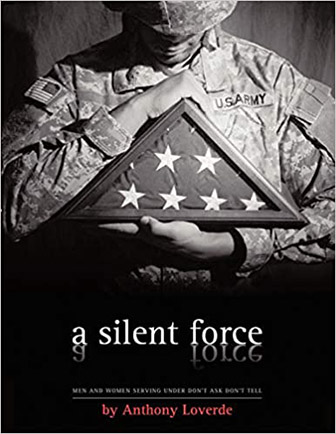
Loverde, Anthony. A Silent Force: Men and Women Serving Under Don’t Ask, Don’t Tell. Bloomington, IN: AuthorHouse, 2010.
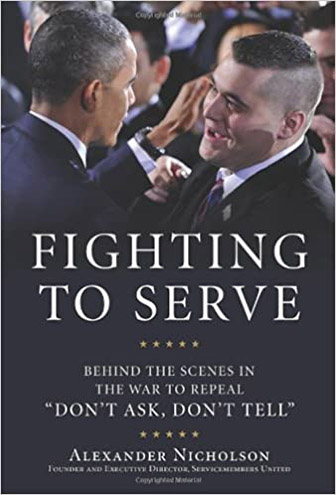
Nicholson, Alexander. Fighting to Serve: Behind the Scenes in the War to Repeal “Don’t Ask, Don’t Tell.” Chicago: Chicago Review Press, 2012.

Snyder-Hill, Stephen. Soldier of Change: From the Closet to the Forefront of the Gay Rights Movement. Lincoln, NE: Potomac Books, 2014.
NPS Faculty research of note
Belkin, A., Barrett, F., Eitelberg, M., Ventresca, M.; 2017; Discharging Transgender Troops Would Cost $960 Million.
Bishop, A., Cook, M., Eitelberg, M., Lucas, G., Mayer, M., Schultz, T., Ventresca, M.; 2017; DoD Is Ready to Accept Transgender Applicants.
Eitelberg, M.; 2013; Gays and the Military: A 20-Year Study at the Naval Postgraduate School.
Eitelberg, M.; 2003; Spacemen, Scholars, and Sailors: Another Look at the Military’s Treatment of Gays.
NPS Student research of note
Borja, T.; 2018; Teaching case: transgender sailors, leadership challenges, and ethical dilemmas.
Appleman, R., McLaughlin, P.; 2013; U.S. navy officer attitudes on the repeal of “Don’t Ask, Don’t Tell”.
Callahan, G., Paffenroth, J.; 2013; Marine Corps officer attitudes toward the repeal of “Don’t Ask, Don’t Tell”.
Washington, E.; 2012; Effective integration through the use of social influence tactics: what the military can learn from racial integration of baseball in ending “Don’t Ask, Don’t Tell”.
Other interesting resources
Shilts, Randy. Conduct Unbecoming: Gays and Lesbians in the U.S. Military. San Francisco: Apollo Media, 1995.
Rimmerman, Craig A. Gay Rights, Military Wrongs: Political Perspectives on Lesbians and Gays in the Military. New York: Garland Pub., 1996.
Davis, Brandon A. Don’t Ask, Don’t Tell Background and Issues on Gays in the Military. New York: Nova Science Publishers, 2010.
